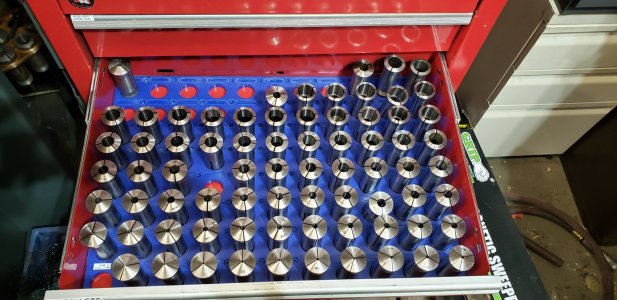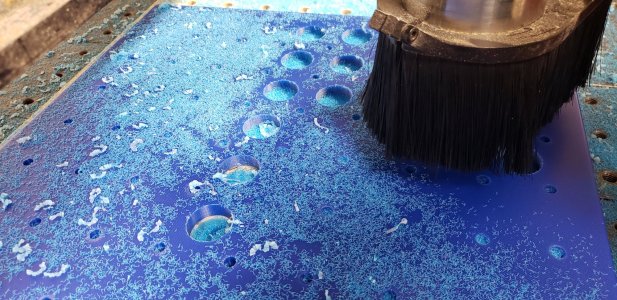Well I figured I'd add into this thread a couple things that I've done.. Not recently really but since I've done them I've found they really helped me.
Personally I'm finding that the more I do to speed up my general fumbling around the shop, the more motivated and productive I am. I'm sure this isn't only me, but I'm getting to a point where if its too much frustration I stop getting things done and eventually give up.
The first is a collect rack that fits exactly in a drawer of the toolbox holding all of the lathe tools. I had them all in their boxes, and they were organized and in order but this works much much better for quickly finding the collet I need.
I started with a cutting board from Canadian wholesale club, I think they're 18inx24in and 0.5in thick. Easy to cut and obviously won't damage the collets. I think the router was probably the fastest part of doing this.
I printed labels for each one with its imperial and metric size, as well as the fraction - Each 1/16 increment is printed in yellow so I can quickly identify them and I find it super useful to have them arranged in this way. I believe this was the longest part of the whole process, but for what I put into it, I am quite certain it has saved me more time than that already.
The 2nd is colour coding the fasteners I am constantly using. I picked up a bunch of dollar store nail polish that sits in a bin and I use it to mark fasteners that I know I could go back to and don't want to be looking for the right tool for. It may look stupid, but it is a lot easier to look for the orange hex key than fuck around trying to get the right key and go back and forth, especially if its somewhere less than convenient.
For like a buck a piece you can pick up a bunch of easily identifiable colours, because nailpolish is meant for hands its pretty tough and will stand up quite well and if you're not happy with it use a little acetone and take it off. You can also use paint pens, which is where I started but there really are not a lot of colours available and they're a lot more money.
The only thing to watch out for is don't accidentally mark your 17mm wrench orange, and then the 3/4 in imperial, offset them by a substantial degree and you can reuse the colours.. use red for maybe 12mm and then again for 19mm. The other thing is its quite hard to find easily identifiable colours outside of a few - Red, green, orange, white, yellow.. those are all easy to spot. But if get something purple-ish you could confuse it with red quite easily.
Anyways, these two things I notice often speed up my day and lower the overall frustration - figured I'd pass them along to others to try out.


